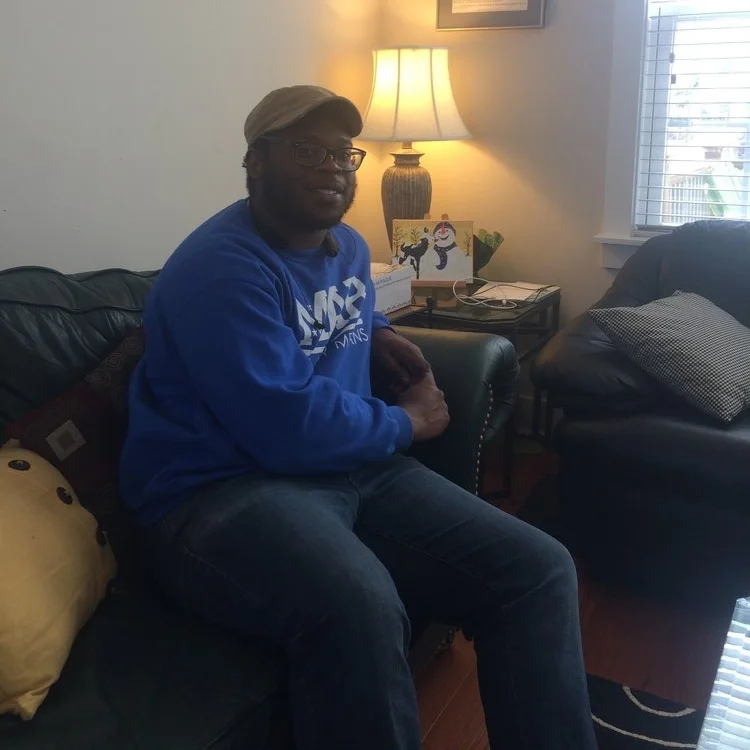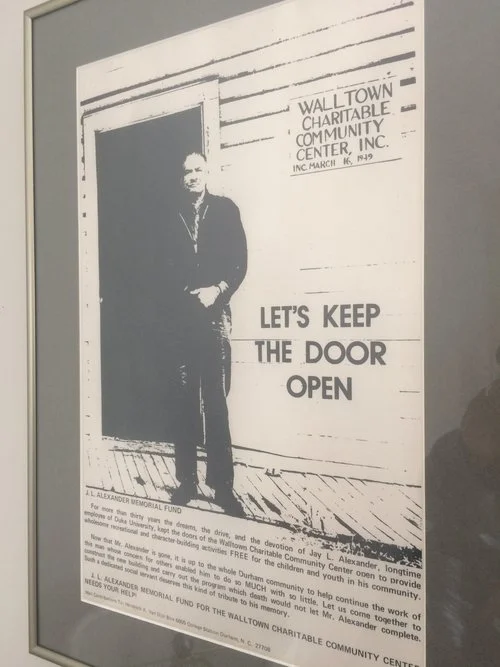“Your throne, O God, endures forever and ever.
Your royal scepter is a scepter of equity.”
— Psalm 45:6
Often, young people from marginalized neighborhoods of color are told that in order to be successful they must leave behind the people and places where they come from. Those who espouse this narrative imply that while the individual person is able to be redeemed, there is no redemption for the community. For the last 13 years, inspired by Dr. John Perkins’ principles of Christian Community Development, Urban Hope has been living out a counter-narrative in Walltown. Our narrative speaks of young people raised up with the vision to see the value within their neighborhoods and to see themselves as potential vehicles for the transformation residents deem necessary.
Through living in the community and facilitating contexts for mutual growth and development, like the Urban Hope Summer Camp, we have sought to raise up indigenous leaders—leaders that are for and from Walltown. Since 2004, we have developed 17 local camp counselors (young adults who are either in college or working in the area), with 10 of those people serving multiple summers. Since we began our Counselor-in-Training (CIT) program in 2007, we have developed 23 high school juniors and seniors who used to be campers themselves. Last summer, Isaiah Simms, Jr. became the first person from the neighborhood to serve as Assistant Director of the Summer Camp!
SUMMER CAMP ASSISTANT DIRECTOR ISAIAH SIMMS (BOW TIE), COUNSELOR FRANK SMITH (BLUE PLAID), AND CIT DEMICHEAL BURTON (PURPLE) WITH YOUTH DURING A SMALL BUSINESS FIELD TRIP AT KOMPLEKS CREATIVE DESIGN FIRM
Yet, as young people from Walltown have come to believe that the neighborhood is not someplace to reject but rather is a place they can reside in and return to, we have faced an enormous challenge in gentrification. Given our proximity to Duke and a revitalizing downtown, Walltown has become a prime location for young, mostly white, professionals and graduate students. The neighborhood has experienced a dramatic increase in rental prices, property taxes, and the cost of buying a home. Hardly any of the young adults who grew up here and want to return can find affordable housing options. This has made me wrestle with the logistical challenges of raising up indigenous leaders. How can we make good on the vision we casted for returning to invest in the neighborhood when the real estate market says to our young people, “you are no longer welcome here?”
A PAINTING OF THE ALEXANDER HOUSE WITH YOUNG MAN ON PORCH BY ARTIST GARY BRADLEY
In August of 2014, Urban Hope was blessed to open up The Alexander House in Walltown as another safe place to develop neighborhood youth and young adults. Throughout the year, the house hosts a variety of activities, including a bi-weekly bible study for youth, a monthly young adult discipleship gathering called YAMZ (Young Adults on a Mission), afterschool tutoring and mentoring, and community celebrations (Christmas party, summer cookouts). More importantly, The Alexander House has been a way for us to offer affordable housing for young adults from Walltown who want to return (so far it has been home to four) and invest in the next generation of youth. In this way, it is a place that carries on the legacy of its namesake, Mr. Jay Lynn Alexander (see below), who, long before Urban Hope, was creating safe places for young people in the neighborhood to grow together into wholeness.
JENNIFER JONES (WHO HAS FAMILY TIES TO WALLTOWN) & TJ HEARN (WHO GREW UP IN THE NEIGHBORHOOD) STAND DURING THE ALEXANDER HOUSE BLESSING ON AUGUST 16, 2014. THEY WERE TWO OF OUR FOUR INITIAL RESIDENTS.
CURRENT A-HOUSE RESIDENT, ROBERT JOHNSON, WORKS AT DURHAM SCHOOL OF THE ARTS WHILE INVESTING IN NEIGHBORHOOD YOUTH
It is a place—as urban planning scholar Dr. Mindi Thompson Fullilove advocates—that “helps people achieve in space what they imagine in relationships.” If we imagine residents of a neighborhood resourced and empowered to engage in communal life, we must also imagine the physical, political and economic structures that allow them to do so. In historically black communities like Walltown, communities that have faced generations of institutional racism in housing and finance (redlining and predatory lending), this means not only empowering people through relationships but also pursuing equity through the way we invest our resources. While I know The Alexander House cannot address the affordable housing challenges of the entire neighborhood, I pray that as we proceed in this journey, it will stand as a testament to the spirit of equity, empowerment and community in Walltown, forever.
Historical Note: The Alexander House is named after a man named Jay Lynn Alexander, who in 1949, established one of Durham’s first neighborhood recreation centers in Walltown. The Walltown Charitable Community Center (often referred to as “Alexander’s Center”) made available a collection of books and a piano. Every week a door-to-door collection supplied the weekly activities which included preschool programs, dances, movies, and seasonal festivities. A resident of Walltown, Mr. Alexander established the center on what was then 5th Street, now known as Sedgefield Street, when he saw that the community needed a place for children to have wholesome, supervised recreation. He also worked as a custodian at Duke for 44 years. Through his relationship with Duke, and North Carolina Central, students from both universities volunteered at the Center.







